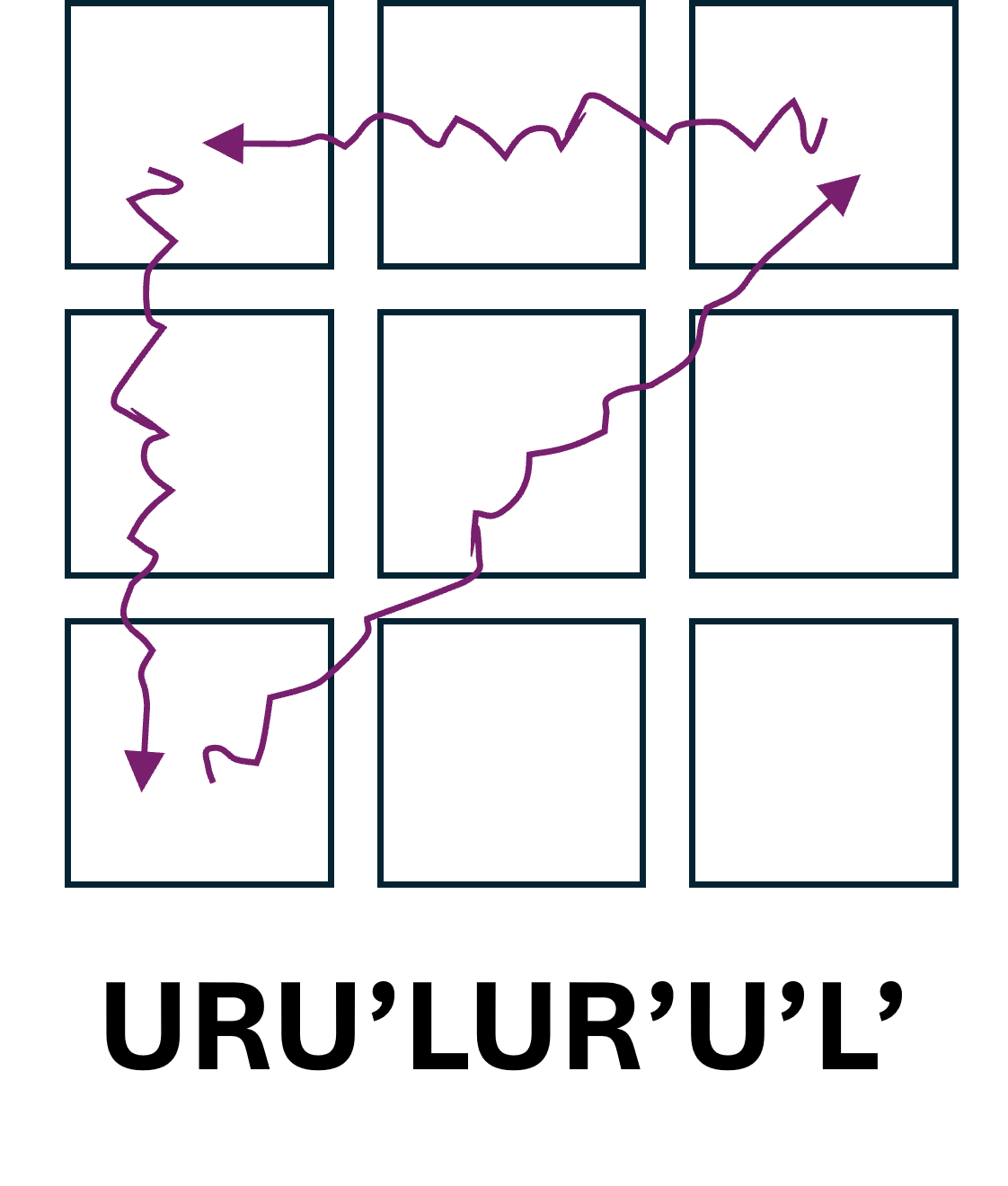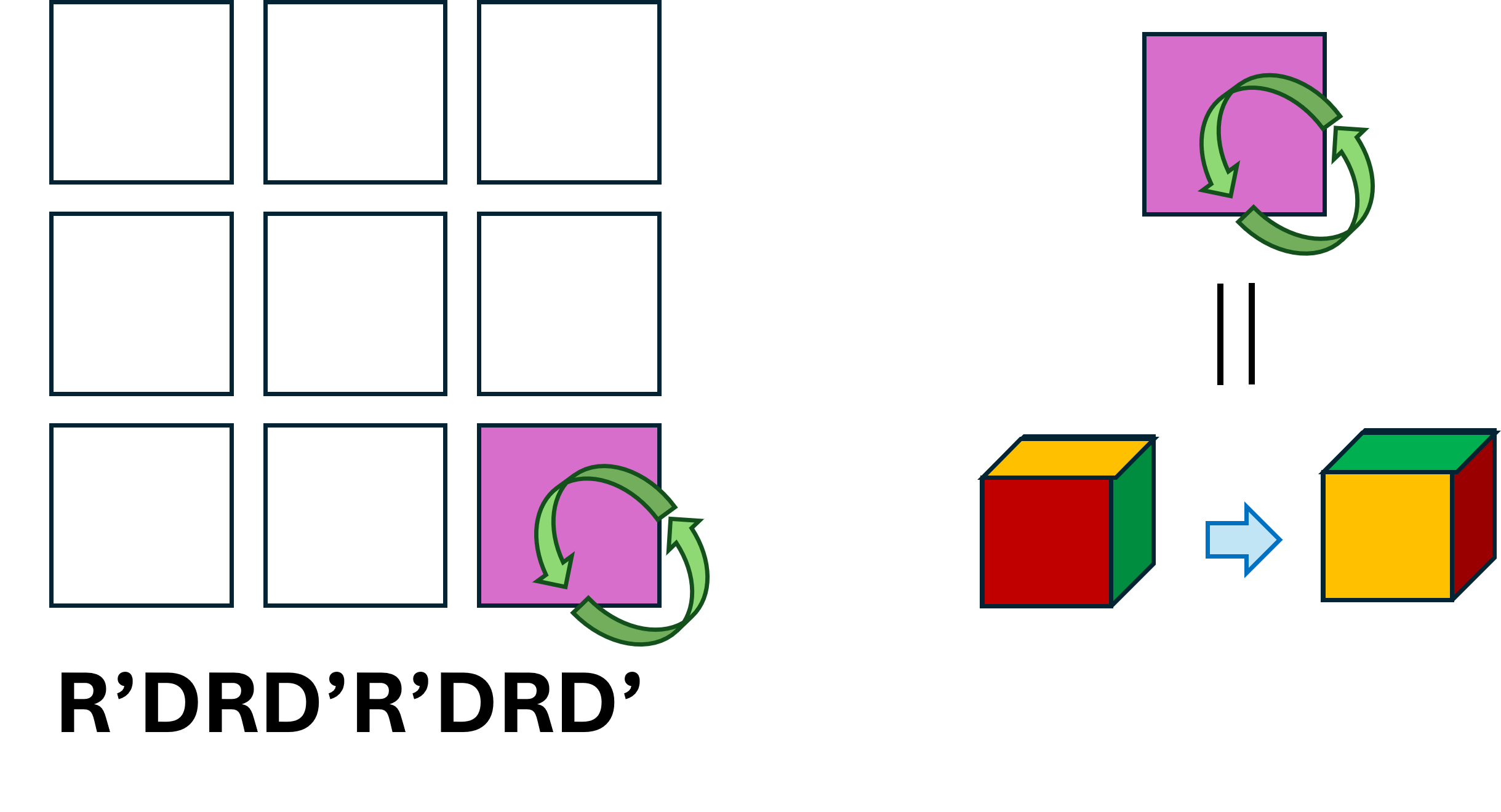Recovering Rubiks Cube Top Layer
Published:
I will provide some useful formulae for recovering the top layer of rubik’s cube.
The following notations are used:
- A straight arrow for translation, and a wavy arrow for transplation plus flipping.
- Each operation is a 90 degree rotation. A plain upper-cased letter means clockwise rotation, and a letter with a prime, e.g. R’, means counter clockwise rotation. The rotation operations are:
- R/R’ (right), L/L’ (left), F/F’ (front), U/U’ (upper), D/D’ (lower), B/B’ (back), M/M’ (the layer in between R and L).
- To memorize the formulae, I use the English sound for clockwise, and Chinese pinyin sound for counter clockwise.
First, we will need three edge operations.

Next, we recover the corners. First, we make sure the pieces are in the correct corners without worrying about the orientations. Here, the purple wavy arrow means the three faces of the corner piece will experience a clockwise swapping, but we do not care about this.

Finally, we correct the orientation of corner pieces by keep on doing the following operation. The operation unit is simply R’DRD’, two units will result in a flipping of the upper-front-left corner, while messing up the lower two layers. However, three units will recover the lower two layers. Therefore, one can first recover the upper-front-left corner, and then rotate the upper layer to this position to keep on doing R’DRD’.

The above formulae form a complete set of operations needed to recover the upper layer.